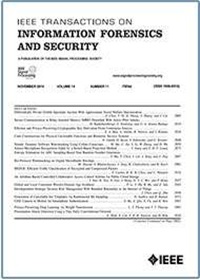Few-Shot Specific Emitter Identification: A Knowledge, Data, and Model-Driven Fusion Framework
IF 6.3
1区 计算机科学
Q1 COMPUTER SCIENCE, THEORY & METHODS
IEEE Transactions on Information Forensics and Security
Pub Date : 2025-03-11
DOI:10.1109/TIFS.2025.3550080
引用次数: 0
Abstract
In the Industrial Internet of Things (IIoT) context, ensuring secure communication is essential. Specific Emitter Identification (SEI), which leverages subtle differences in radio frequency signals to identify distinct emitters, is key to enhancing communication security. However, traditional SEI methods often rely on large labeled datasets and complex signal processing techniques, which limit their practical applicability due to data acquisition challenges and inefficiency. To address these limitations, we propose a novel Few-shot Specific Emitter Identification (FS-SEI) approach named KDM. This method fuses deep learning with multi-modal data processing, utilizing a hybrid neural network architecture that combines handcrafted features, self-supervised learning, and few-shot learning techniques. Our framework improves learning efficiency and accuracy, especially in data-scarce scenarios. We evaluate KDM using open-source Wi-Fi and ADS-B datasets, and the results demonstrate that our method consistently outperforms existing state-of-the-art few-shot SEI approaches. For example, on the ADS-B dataset, KDM boosts accuracy from 60.99% to 75.34% as the sample count increases from 5-shot to 10-shot, surpassing other methods by over 10%. Similarly, on the Wi-Fi dataset, KDM achieves an impressive 88.94% accuracy in low-sample (5-shot) scenarios. The codes are available at求助全文
约1分钟内获得全文
求助全文
来源期刊

IEEE Transactions on Information Forensics and Security
工程技术-工程:电子与电气
CiteScore
14.40
自引率
7.40%
发文量
234
审稿时长
6.5 months
期刊介绍:
The IEEE Transactions on Information Forensics and Security covers the sciences, technologies, and applications relating to information forensics, information security, biometrics, surveillance and systems applications that incorporate these features
 求助内容:
求助内容: 应助结果提醒方式:
应助结果提醒方式:


